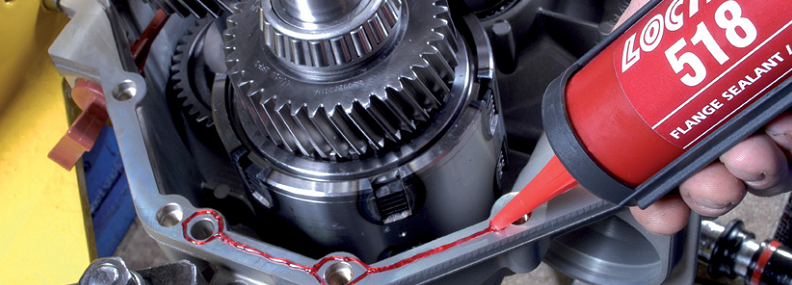The Benefits Of Using Liquid Gaskets
February 6, 2018
Andrea Campi - Product Manager for Henkel Adhesive Technologies ANZ
Introduction
Preventing the leakage of fluids is a critical requirement in the transport of a fluid (liquid or gas), in industrial processes and in the operation of machinery where liquids are used.
The fluids vary in substance, sometimes merely steam or water, but often they are toxic or hazardous fluids and pose a great financial and environmental risks if not handled correctly.
Valves, pumps and flanges are critical components in chemical industrial plants and in Australia, fugitive emissions from these plants alone are projected to reach 37 megatonnes by 2020.1 The overall amount can be potentially mitigated, if leakage from these parts are prevented.
The most common way to prevent the leakage of fluids is by using gaskets. When choosing a type of gasket, it is important to consider performance and reliability, with the right choice resulting in low leak and failure rates as well as a longer product life. Currently, there are two options – the common compression type gasket and the recent and more advanced anaerobic types.
Limitation of compression gaskets
Compression gasket is the most typical form of gasket. However, they have several limitations and often fail or leak.
Compression gaskets deform to fill the irregular voids between the two surfaces being sealed. This phenomenon known as gasket creep.
Gasket creep leads to compression set. As the gasket is under compressive loads for long periods of time, it loses its ability to recover to its original thickness and permanently sets in its compressed shape. The gasket then fails to provide the pressure to return to its original thickness and no longer seals effectively, as leak pathways are created.
A further issue with gasket creep is that when maintenance staff find a leak they often re-torque the bolt to achieve a seal. In this type of failure, the bolt tension has not only exceeded the appropriate compression loads of the gasket but also exceeded flexural strength of the flanges.
The anaerobic alternative
With these issues in mind, an alternative to traditional compression gaskets is available. The concept behind anaerobic flange sealants is that there is no gasket, therefore eliminating the failings of the gasket design. Anaerobic flange sealants are designed to create formin-place (FIP) gaskets between rigid metal flanges that are bolted together – metal surface to metal surface, as if the gasket did not exist, filling only the microscopic voids which exist between the mating surfaces.
The fundamental feature with an anaerobic gasket is that it remains liquid when exposed to air, but cures to a thermoset plastic, when confined between mating flanges. This key feature ensures that the most common reasons for leaks in compression gaskets do not occur. By its very nature, an anaerobic gasket is not under any compression, so it does not have any effects of gasket creep. In addition, as it is liquid, it will fill any voids or surface irregularities once it cures, ensuring that there are no leakage paths, from surface irregularities.
Anaerobic flange sealants are hence best suited for rigid metal-to-metal assemblies where the sealing gap is small. As an example, surface flatness should not exceed 0.1mm over a length of 400mm and the maximum gap at surface imperfections must be within the maximum gap cure of the product. The typical maximum gap cure of anaerobic flange sealants ranges from 0.1 to 0.25mm.
The LOCTITE 518
Henkel Adhesive Technology, the global leader in the adhesive markets, has developed an industry leading product in anaerobic flange sealant: LOCTITE 518. LOCTITE 518 has recently undergone significant redevelopment and has been successfully upgraded to solve common challenges associated with anaerobic gasket products, these include oil tolerance, cleaner contamination tolerance, gap cure, cure on inactive surfaces and flexibility. The recent product upgrade now offers better and more consistent cure through the light oil and contaminations experienced under real-world production and maintenance conditions, improved gap cure, more robust and higher strength on passive metal surfaces and higher flexibility.
With success stories across all sectors, LOCTITE 518 has now been developed for general purpose and is ideal for use on casted iron, steel and aluminium and alloy flanges. With increased flexibility, improved adhesion, enhanced sealing, improved gap cure and higher strength, LOCTITE 518 resolves the many leak problems found with compression gaskets.




